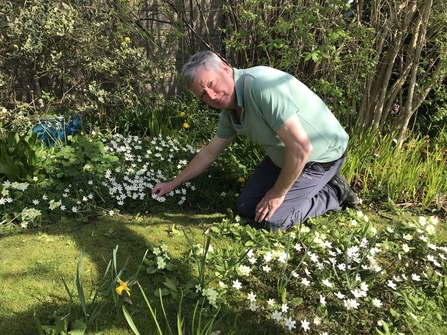Perhaps the best thing was that the course was led by Dr Peter Toghill, author of “The Geology of Shropshire” (and other works). Peter is a great communicator and wonderfully knowledgeable, particularly about Shropshire’s rocks – and that was what interested me.
I learnt about the differences between the red sandstones of Grinshill and Bridgnorth (the latter was formed in a desert), the mineralisation process that gave us the lead deposits at Snailbeach and even where to find a fossilised volcanic explosion!
However, my fellow student and I were captivated by fossil hunting. It’s almost impossible not to be; opening the layers of a lump of shale to find a creature that hasn’t seen daylight for 500 million years is just, well, WOW!

